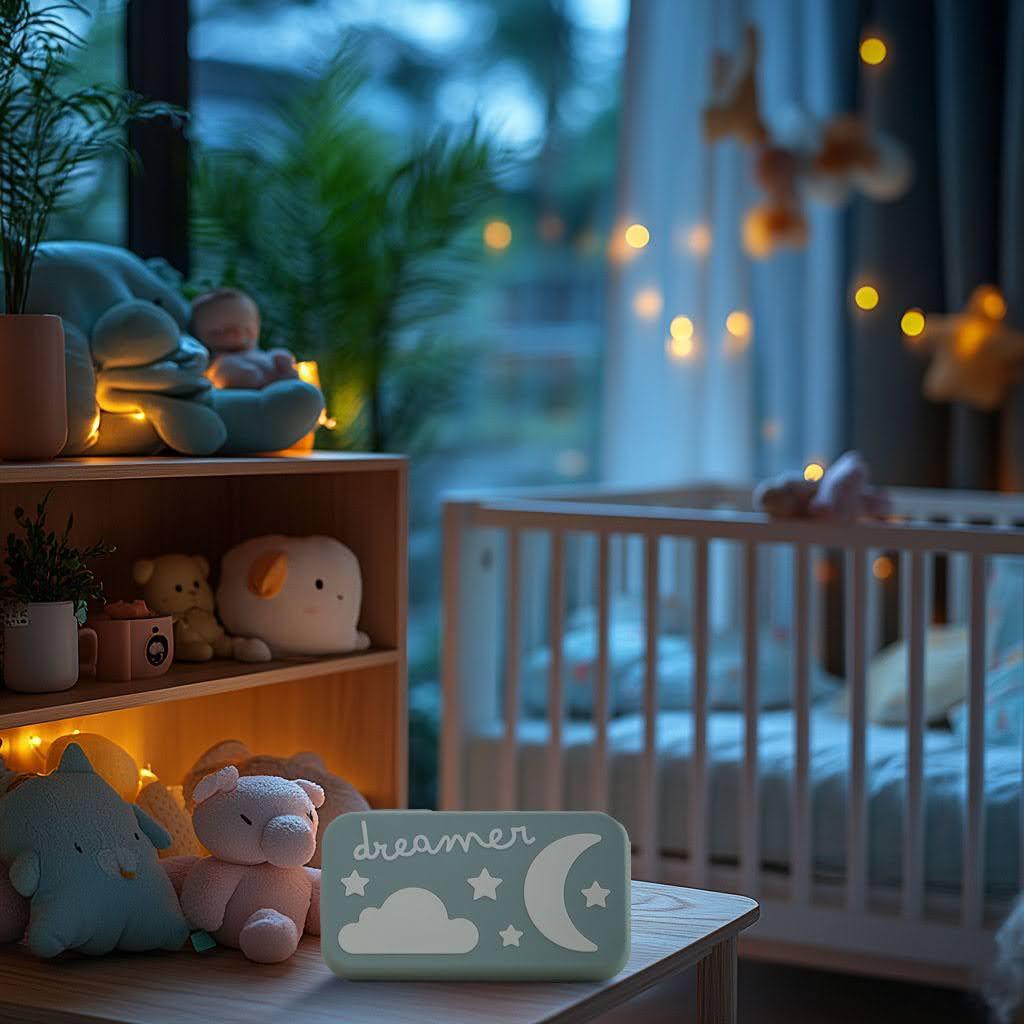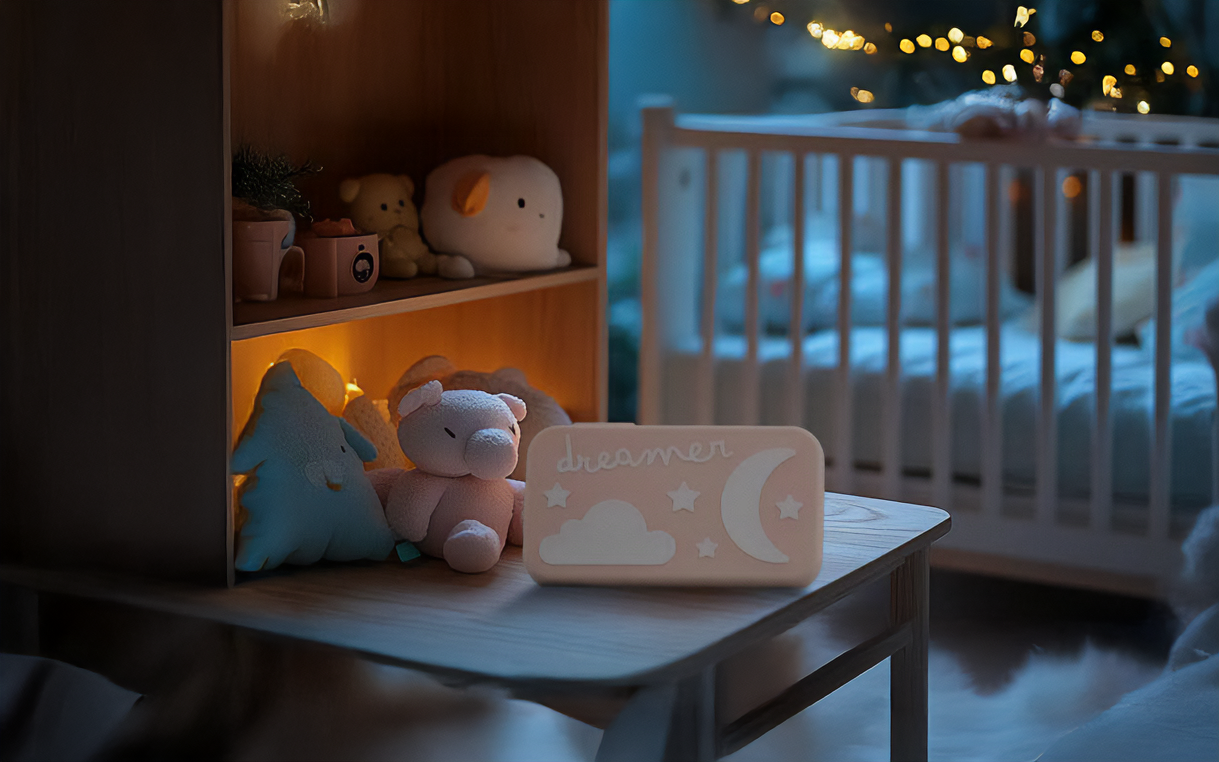
Discover The Dreamer
The Ultimate Baby Sound Machine
Discover The Dreamer
The Ultimate Baby Sound Machine
CBS News features Dreamer!
Customer Reviews
Sleep Inspired by Nature, Backed by Science
Meet The Dreamer, the new standard in quality for baby sound machines.
We harness ancient sound frequencies, now scientifically proven to promote restful sleep for babies. Designed for parents who don’t compromise quality regarding their children, The Dreamer combines modern technology with thoughtful design to create a sleep solution like no other. With The Dreamer, you can ensure your little one enjoys peaceful, restorative sleep every night and you too!
-
Food Grade, BPA Free Silicone
Ensure your baby’s safety with our food-grade, BPA-free silicone casing. Soft, durable, and safe, The Dreamer is perfect for even the most sensitive skin.
-

Golden Ratio Inspired Sound Port
Experience superior sound quality with our Golden Ratio-inspired sound port. This design optimizes sound flow, creating a calming and immersive auditory environment.
-
Magnetic Clasp with Proprietary Silicone Strap
Easily attach The Dreamer to cribs, strollers, or car seats with our innovative magnetic clasp and proprietary silicone strap. Designed for convenience and secure attachment.
-
Customized "Dreamscapes"
Our curated “Dreamscapes” incorporate specific frequencies known to promote relaxation and sleep. Tailor the sound environment to your baby’s needs for the perfect night’s rest.
-

Evolving iOS App
Gain personalized insights into your baby’s sleep patterns with our evolving iOS app. Control The Dreamer remotely and receive tips to enhance your child’s sleep.
-

Bluetooth Low Energy (BLE) Connectivity
Minimize exposure to potentially harmful radio waves with our Bluetooth connectivity. Enjoy a safe and secure connection without compromising on performance.
Anatomy of a Dreamer
The Dreamer is a beautifully designed sleep aid device that merges nature-inspired tranquility with cutting-edge science to create the ultimate sound machine for babies. Crafted with a soft, food-grade, BPA-free silicone casing, it prioritizes safety and durability, ensuring it’s gentle enough for even the most sensitive skin. The device features a Golden Ratio-inspired sound port, optimizing the flow of sound waves for a rich, immersive auditory experience that lulls little ones into deep, restful sleep.
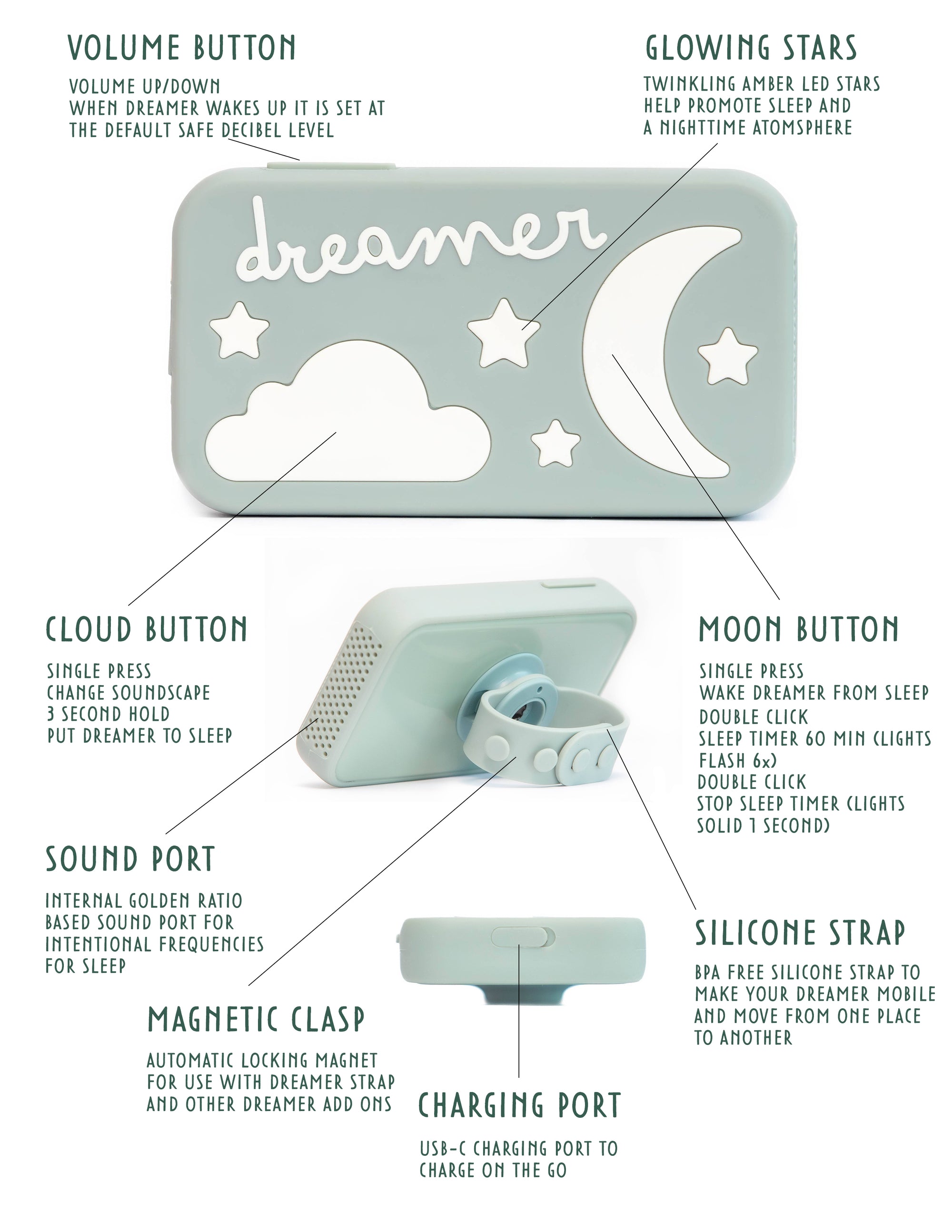
Take Your Dreamer Everywhere!
The Dreamer's durrable BPA Free Silicone houseing allows you to bring easy sleep with you around the neighborhood, on the road and even to the beach!
The Dreamer's Magnetic Clasp with Proprietary Silicone Strap easily attaches to the headrest in the backseat of your car, your babies stroller and more!
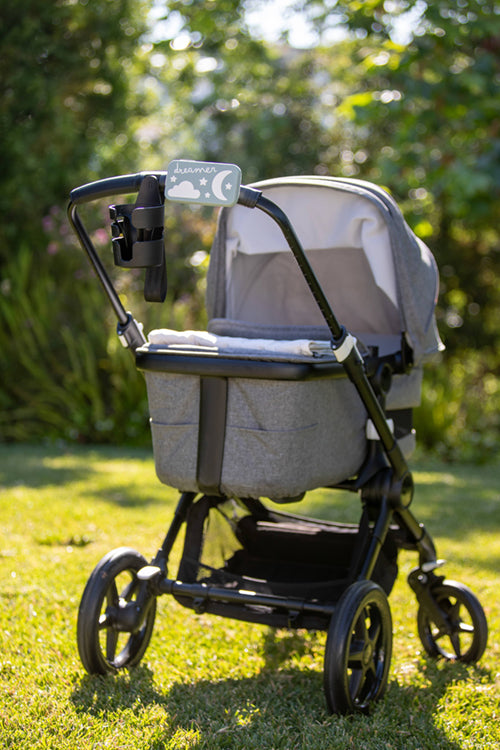


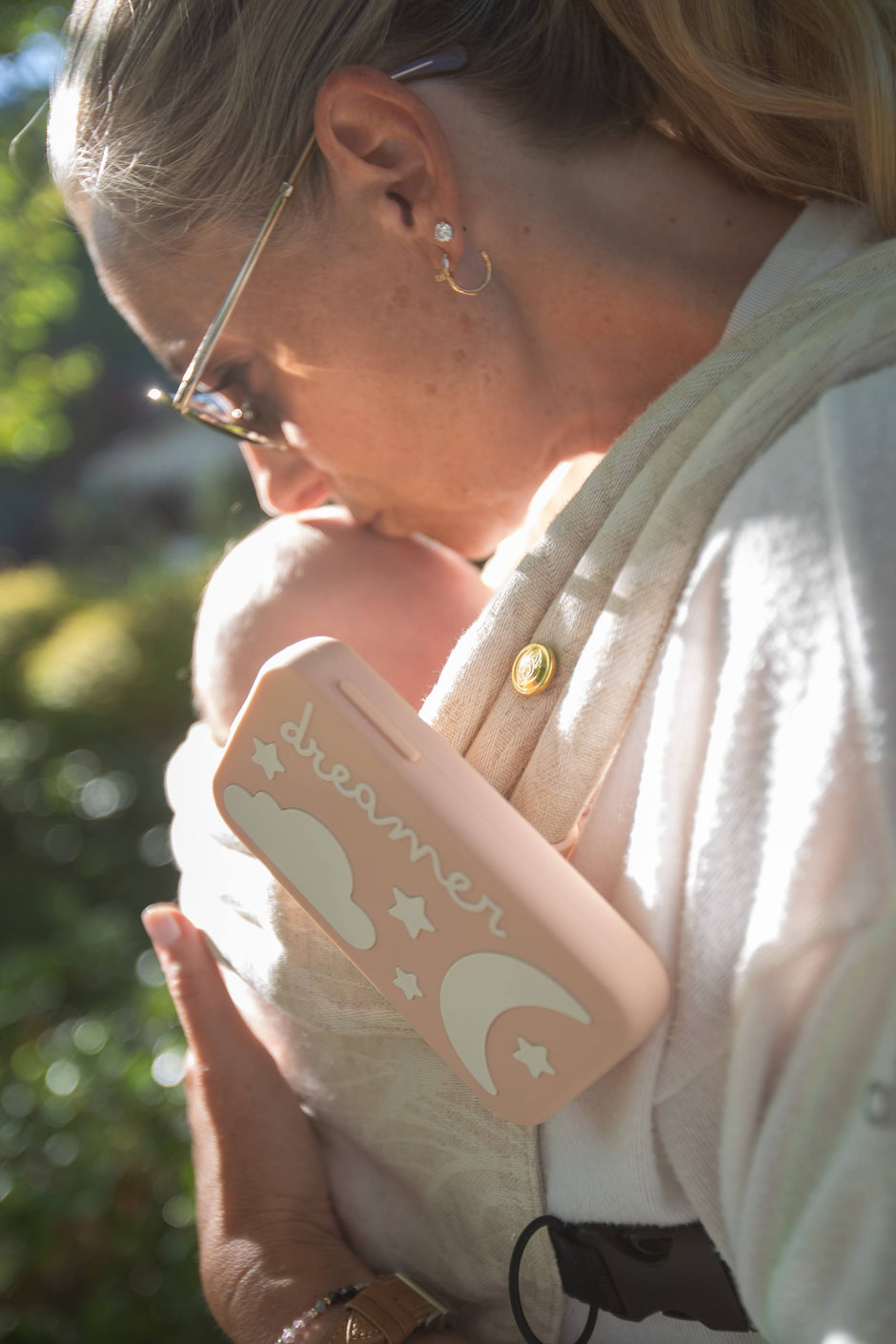
8 Custom Soundscapes
Our specially designed Golden Ratio Sound port combines the scientific natural shape with the beauty of this naturally occuring mathematical sequence (Fibonacci) to help the frequencies resonate.

1) Dreamer Lullaby
Our custom 528hz Dreamer Lullaby was inspired by our own kids and love for classic lullabys.
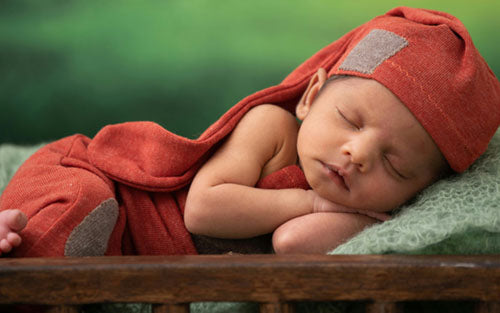
2) 432hz Lullaby
This 432 frequency Lullaby was also curated with our love of historical sleep sounds.

5) Pink Noise
Calming Pink Noise interwoven with 432 Frequency.
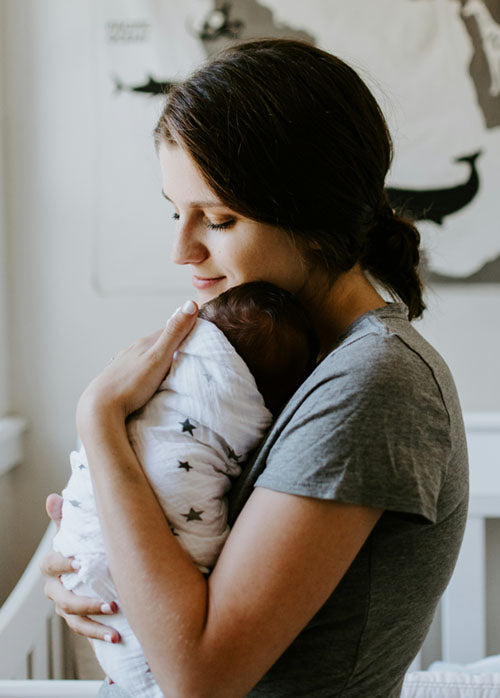
3) Heartbeat
Our heartbeat soundcape emulates a parents heartbeat for a comforting and familiar sound interwoven with 432 Frequency.

4) Ocean
Soothing ocean sounds interwoven with 528 Frequency.

6) Rain
Relaxing rain soundscape interwoven with 528 Frequency
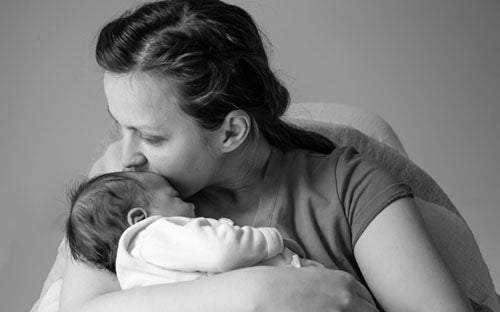
7&8) Shush
Our custom “Shush” soundscapes emulate a mothers calming shushing assurance with two different variations.
Dreamer App
Battery Level
Below the Dreamer logo on the home screen you will see a battery level indicator, just like your phone.
Volume
Use this slider to control the volume of your Dreamer.
LED Brightness
Use this slider to control the the brightness of your Dreamer.
Song Selection
Use this to select the soundscape
that is playing on your Dreamer.
Sleep Timer
Use this to the sleep timer on your Dreamer.

Latest Articles
-

CBS Feature - The Dreamer Sound Machine
The Dreamer Sound Machine was featured on CBS News! There's a new product hitting the market that will help your...
-

Dreamer featured on The Stuph File podcast
In this episode of The Stuph File Podcast, host Peter Anthony Holder discusses the creation of the "Dreamer" baby sound...
-

Unlocking the Science of Sound: A Better Night’s Sleep for Your Baby with 432 Hz and 528 Hz
As parents ourselves, we struggled with sleepless nights as our baby tossed and turned? We had other sound machines, but...
Need Help?
Email support@sleepwithdreamer.com
Can I order more Dreamer Straps?
Can I order more Dreamer Straps?
YES! Our straps will be available for purchase soon! Look out for updates for our Dreamer accessories!
Whats that noise that I Hear in the background of the sounds?
Whats that noise that I Hear in the background of the sounds?
These are our Frequencies! We use 432 and 528 Frequencies layered into our soundscapes! Heres some more information on the benefits of these frequencies!
What Are 432 Hz and 528 Hz Frequencies?
What Are 432 Hz and 528 Hz Frequencies?
In the world of sound therapy, different frequencies are believed to interact with the body and mind in unique ways.
- 432 Hz is often referred to as the “natural tuning” frequency. It is said to align with the vibrations of the universe and is thought to bring a sense of harmony and balance. For babies, this frequency can help calm their nervous system and prepare their minds for restful sleep.
- 528 Hz, also known as the “love frequency,” is famous for its soothing and healing properties. Research suggests that this frequency can reduce stress, foster relaxation, and even promote cellular repair—all of which are essential for a baby’s overall well-being.
What Are 432 Hz and 528 Hz Frequencies?
What Are 432 Hz and 528 Hz Frequencies?
Babies are incredibly sensitive to their environment, and sound plays a significant role in how they perceive comfort and security. 432 Hz and 528 Hz frequencies work by influencing brainwaves and encouraging a state of relaxation.
Here’s how:
- Calming the Nervous System: Gentle sound waves at these frequencies have a profound effect on the autonomic nervous system. They help lower cortisol levels, which is the stress hormone, and encourage the release of endorphins, the body’s natural feel-good chemicals. This physiological response leads to a slower heart rate, deeper breathing, and an overall state of calm, allowing babies to drift off more easily.
- Encouraging Theta Brainwaves: Theta brainwaves are associated with the light sleep stage, creativity, and deep relaxation. These frequencies help transition the brain from active beta waves (associated with wakefulness) to the slower theta waves. This shift is critical for soothing babies, as theta waves mimic the natural rhythms experienced in the womb, creating a sense of familiarity and security that encourages uninterrupted sleep cycles.
- Masking Environmental Noise: These tones can create a consistent soundscape that drowns out sudden, disruptive noises like traffic or loud conversations, ensuring uninterrupted sleep.












































